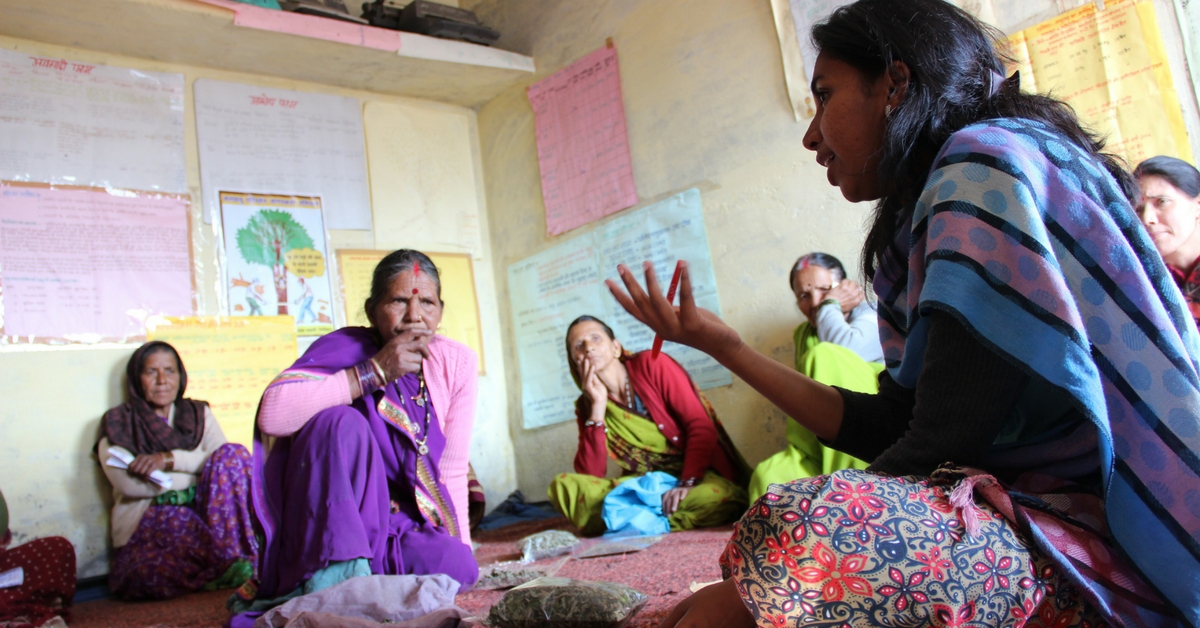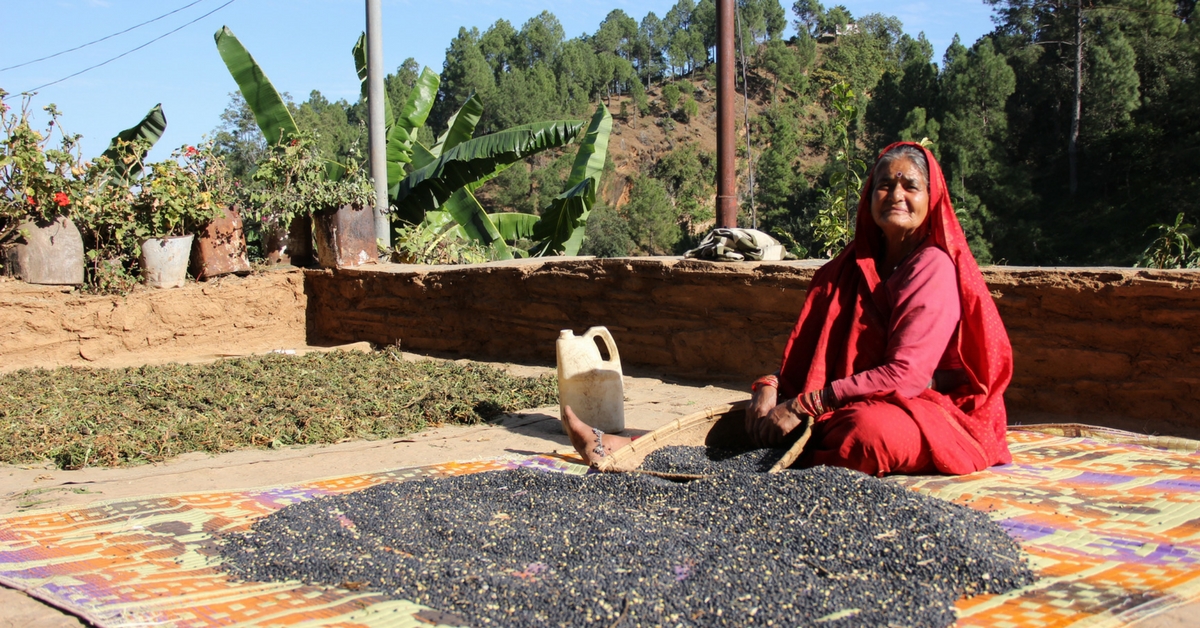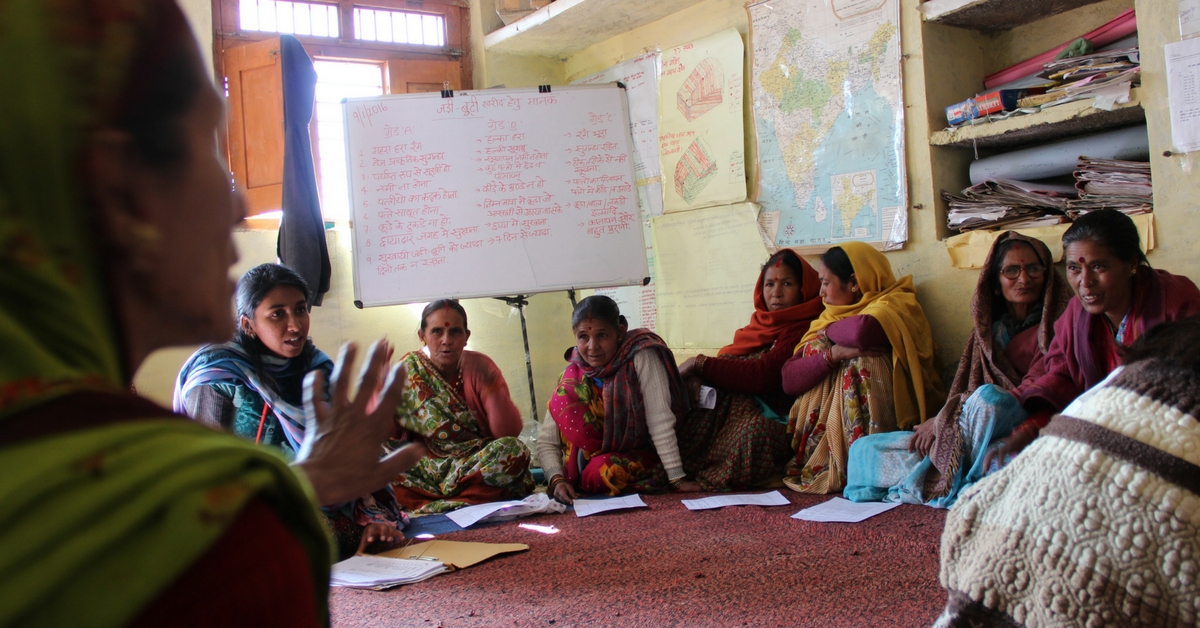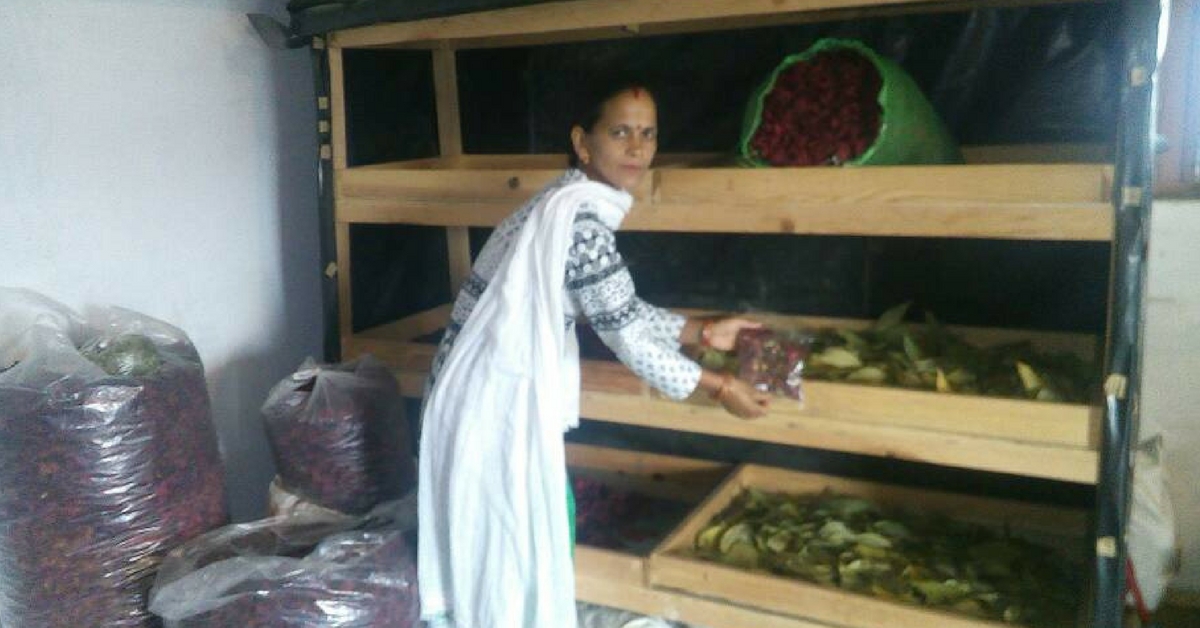Meet the Chennai Woman Who Helped Revive Herb Farming & Empowered Farmers in a Uttarakhand Village
In order to help the farmers with better drying methods, Nafeesa Usman also devised a solar dryer prototype of her own design.

Located in the district of Nainital, the Reetha cluster of villages is surrounded by acres of rich, fertile soil, perfect for cultivating a variety of medicinal and aromatic herbs, including the likes of oregano and basil.
Almost 20 years ago, the Central Himalayan Rural Action Group (CHIRAG) set up a culinary herbs programme in the village.
With the goal of empowering local women farmers, the organisation trained them in the cultivation and processing of herbs.

Unfortunately, with changing farming practices, unpredictable rainfall, labour and time-intensive drying of herbs, as well as other pressing issues like low prices and poor quality of produce, the women have phased out of this farming practice over the years.
A young woman from Chennai, and a SBI Youth For India fellow, has helped these women to reclaim herb farming with efficient drying techniques and innovations over an ambitious 13-month project.
Nafeesa Usman, a B.Sc graduate in clinical nutrition and dietetics from the University of Madras, took up the project due to her inclination towards culinary herbs. “Until then, I never knew these herbs were actually grown in our own country and this made me more intrigued about the practices and the reasons why the farming practice was into decline,” Nafeesa says.
Nafeesa tried to understand why culinary herb farming was dwindling away and the crucial elements leading to its decline.

Nafeesa in a session with the women herb farmers.
She concluded that simple mistakes made during the drying phase and unhygienic practices were main reasons for the poor quality. “With their harvests being repeatedly rejected by buyers due to poor quality, the women started thinking that the time and labour that they had been investing in herb farming was just getting wasted away,” she adds.
Nafeesa approached the project by familiarising herself with a variety of culinary herbs, their names, colour of the leaves, shape, texture, flavour and properties. She also spent a considerable time in CHIRAG’s experimental farm to learn more about the cultivation, harvesting and drying of herbs.
She visited the villages regularly and acquainted herself with herb farmers who could explain the cultivation and drying methods they had been employing.

She also conducted informal surveys that focused on their income, difficulties and challenges and reasons for not wishing to continue growing and selling dried herbs.
“The initial meetings and surveys showed that the women had no understanding about the usage of these herbs. Also, casual and unhygienic ways of drying were practised because they had no idea that these herbs were meant for consumption,” Nafeesa explains.
Nafeesa realised that the general disappointment amongst the farmers was due to the rejection they faced at collection centres. The herbs would turn black, lose flavour and sometimes even had dirt and contaminants, which were unsurprisingly rejected. Instead of introspecting on better ways to ensure quality production, they only saw their days of labour go wasted.
Interested in applying for the SBI Youth For India Fellowship? Applications are open till June 9, 2017
Unable to view the above button? Click here
Among the 20 villages that fall under the Reetha cluster, Nafeesa chose to work in the villages of Simayal, Meora and Nathuwakhan, which had the most number of herb farmers. “Since the herb business was majorly taken up by the women, it was initially difficult to convince them to join my pilot group, as they already had a huge workload. Out of many farmers I had approached, 20 farmers were interested in joining”, she says.
You may also like: This 23-Year-Old Engineer Is Teaching Village Kids How to Use Engineering to Solve Everyday Problems
The women were approached and selected based on their interest, availability and willingness to learn and apply the new drying techniques. “Also, all the selected farmers had some years of experience in herbs since my project didn’t involve training on cultivation but rather improving already existing drying techniques,” Nafeesa adds.
Along with initial training on herb qualities and their grading, that included discussion and sample sessions, the pilot group also attended sessions in collaboration with the SHGs of the cluster; in each meeting, the farmers were asked about their need for seeds, saplings and issues they faced in drying or cultivating. They were also given tips to improve their existing drying techniques.
Meanwhile, with research and expert consultation, Nafeesa came up with a model for a solar dryer.

Nafessa explaining about the solar dryer prototype that she had devised.
“The weather in this area is suitable for solar drying all around the year except three months of monsoon and winter. The humidity was a problem but since the herbs needed only 30-45 degrees Celsius for optimum drying, achieving that temperature was not difficult,” she explains.
Considering the economic state of the farmers, it was important for the prototype design to be cheap and easy to construct as well as maintain. Keeping these factors in mind, Nafeesa devised an indirect solar dryer model.“Coming from a nutrition science background, I had no technical knowledge on solar dryers. It was a whole new learning experience about solar dryers and building one,” she exclaims.
You may also like: This 30-Year-Old Quit a Job in Dubai & Is Now Helping a Gujarat Village Earn through Eco Tourism
After multiple trials and testing, it was found that the herbs dried almost a day or two faster than the traditional mode. They were also free of any dust and other adulterants.“The tedious job of drying the herbs outside in a cloth or newspaper when the sun is up, then shifting them inside for the night was eradicated”, Nafeesa says.
The solar dryer prototype was showcased during the Women’s Day celebrations on March 8 last year when women from all the villages of Reetha gathered to learn about the principle and benefits of the new device. “Regular meetings with women of the pilot group were conducted and we encouraged them to try the solar dryer for themselves to understand its workings and its benefits,” she says.

Speaking on her experience of living in the mountains and interacting with villagers, Nafeesa quotes the Pahari way of life. “It isn’t the material life that these people chase. Simple joys keep them content. It is one of the best lessons that I’ve learnt during my stay,” she says.
Interested in applying for the SBI Youth For India Fellowship? Applications are open till June 9, 2017
Unable to view the above button? Click here
Like this story? Or have something to share? Write to us: [email protected], or connect with us on Facebook and Twitter.
NEW: Click here to get positive news on WhatsApp!
This story made me
- 97
- 121
- 89
- 167
Tell Us More
We bring stories straight from the heart of India, to inspire millions and create a wave of impact. Our positive movement is growing bigger everyday, and we would love for you to join it.
Please contribute whatever you can, every little penny helps our team in bringing you more stories that support dreams and spread hope.



















